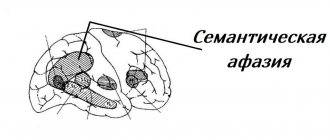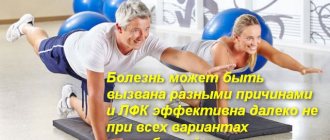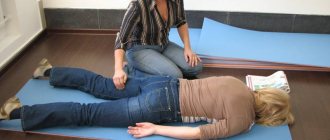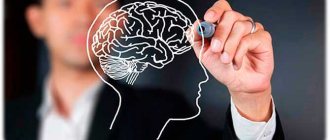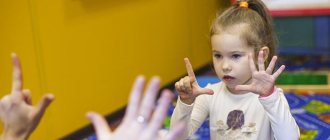Games for the development of motor and tactile memory
This exercise trains children’s tactile memory well – the ability to remember sensations after being touched.
The baby is blindfolded and, one by one, different objects (3-10 pieces) are given into his hands, without naming them. The child must independently guess what the object is. Then invite the child to name all the objects in the order in which he guessed them.
The difficulty of such a game for memory development is that the child needs to perform 2 mental operations - recognition and memorization.
Diagnostics
Diagnosis of the state of auditory memory is usually carried out according to A. Luria’s “10 words” method. The method of learning 10 words is an auditory memory test that reflects the ability of a child or adult to perceive information by ear, remember and reproduce it in the future. Testing requires certain conditions:
- The room is kept quiet; outside conversations and noises are unacceptable.
- The subject is given 10 words and asked to remember them.
- Words for testing are selected taking into account criteria - monotony (one-syllable or two-syllable nouns in the nominative case, singular), lack of semantic connection (for example, you cannot use the words “table” and “chair” at the same time).
After reading a series of words, the subject is asked to repeat them. Testing using 1 set of words is repeated 5-6 times without breaks. After 6 attempts, take a break for 1 hour. At the end of the specified period, the subject must name the words that he remembers without first reading them.
The number of words that the subject was able to repeat during 1 series reflects the level of short-term auditory memory. The number of words that the subject was able to repeat after an hour's break reflects the level of long-term auditory memory.
Another simple test: ask your interlocutor to tell you any 4 single-digit numbers, for example, “8”, “1”, “3” and “5”. The subject's task is reduced to repeating the named numbers in reverse order.
Methods for developing memory and attention
Most children do not have the level of motivation and self-organization that would allow them to regularly study and work on developing their skills and intellectual abilities. Therefore, it is parents who have to not only monitor their children’s progress at school, but also control how they study additionally. All this takes too much time and effort, so many adults prefer memory and attention development courses rather than independent training.
The “Memorica” program from the AMAKids Academy for the Development of Intelligence is an effective method for developing memory in children and adolescents, which allows them to improve their skills in working with information. In this course, the child will be able to master several approaches to perceiving and memorizing educational material, and will also become more attentive and learn to maintain concentration during classes at school and at home. In the future, this will help him cope with the academic load more easily and better master the school curriculum.
Short-term auditory memory. Methodology.
Verbal report of the subject_________________________________________________________ Observations of the experimenter:_________________________________________________ Experimenter ____________________________________________________________
Instructions. Instructions for children.
— Instruction(s):
“Now we will test your memory.
I’ll tell you the words, you’ll listen to them, and then repeat them as much as you can, in any order.” —·Instruction (b):
“Now I will say the same words again, you will listen to them and repeat them - both those that you have already named and those that you will remember now.
You can name the words in any order." Instructions for adults. — Instruction(s):
“Now I will read a few words.
Listen carefully. When I finish reading, immediately repeat as many words as you remember. You can repeat the words in any order." — Instruction (b):
“Now I will read you the same words again, and you must repeat them again, both those that you have already named and those that you missed the first time.
The order of the words is not important." Processing the results.
1. Count the total number of words correctly reproduced during each repetition and write it down in column V of the protocol. 2. Construct a memorization graph based on these data. The serial numbers of repetitions are plotted on the abscissa axis, and the V values are plotted on the ordinate axis.
Word learning schedule
3. Calculate the frequency of reproduction of each word for the entire number of repetitions and calculate the memorization coefficient for them using the formula (calculation accuracy is 1%):
, Where
K i
— coefficient of memorization of the i-th word,
Р i
— its absolute frequency;
n
is the number of repetitions. 4. Construct a graph of the frequency of memorization of each word. The ordinal numbers of words are plotted on the abscissa axis, and the values of K are plotted on the ordinate axis.
Word memorization frequency graph
5. Compile summary tables for indicators V
and
K
for the group of subjects; calculate the average indicators and plot these data on the individual graphs of this subject. Compare individual data with group averages. 6. Along with this, you can calculate the percentage of information loss an hour after memorization:
, Where
V longevity
.
- the volume of long-term memory (after one hour) V 6
· - the number of words reproduced in the 6th series
Interpretation.
Analyze the forms of the resulting graphs, using material from a verbal report and observations of the progress of work. Based on the shape of the curve, conclusions can be drawn regarding the characteristics of memorization. Thus, in healthy children, with each reproduction, the number of correctly named words increases, weakened children reproduce a smaller number, and may demonstrate getting stuck on “extra” words. A large number of “extra” words indicates disinhibition or disorders of consciousness. When examining adults, by the third repetition, a subject with normal memory usually reproduces up to 9 or 10 words correctly. The memory curve may indicate waning attention and/or severe fatigue. Increased fatigue is recorded if the subject (adult or child) immediately reproduced 8-9 words, and then, each time, less and less (the curve on the graph does not increase, but decreases). In addition, if the subject reproduces fewer and fewer words, this may indicate forgetfulness and absent-mindedness. The zigzag nature of the curve indicates instability of attention. A plateau-shaped curve indicates the child’s emotional lethargy and lack of interest. In cases of traumatic brain injury or neuroinfection, subjects remember the first and last words. At the same time, the volume of memorization of the material does not change. With neuroses, memorization is slow, the schedule is zigzag, and a larger number of presentations is needed. Zigzag also indicates instability of attention and its fluctuations. You should pay attention to the presence of the “edge effect”. The number of words retained and reproduced in the first series shows the capacity of auditory short-term memory. The norm is considered to be 7±2 words (units of information). The number of words retained and recalled one hour later shows the capacity of auditory long-term memory.
